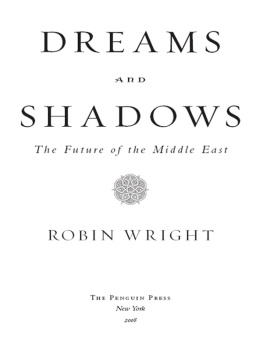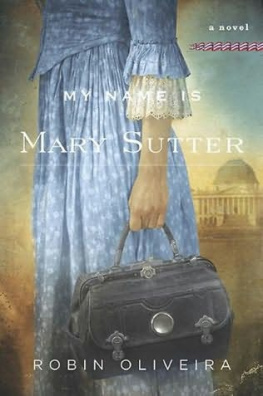(ed. with Misha Kavka and Jennifer Lawn)
ACKNOWLEDGEMENTS
First, my most sincere thanks to Derek and Ellyne Challis, who made available Hydes manuscripts and gave their time, knowledge and hospitality over a decade of visits. Thanks, too, to Alison Hunt, whose findings in her extensive doctoral research have proved complementary to my own, and whose work should be consulted by anyone wanting more detail on Hydes psychiatric experience and further contexts for her other writing. I am most grateful for Alisons support of this publication. And thank you to Lisa Docherty for the first transcription of the 1934 Auotbiography manuscript, to my wonderful colleagues Michele Leggott and Patrick Sandbrook as co-initiators of the Marsden funded project which began this project and for the inspiring examples of their work, and to Pat particularly for his ongoing interest and generosity in the late stages of this project (of which initially he was to be co-editor). Profound thanks go to all other Hyde scholars and students whose insights have informed my commentary: from the 1980s scholars Linda Hardy, Gillian Boddy, Phillida Bunkle and Jacqueline Matthews, to the authors of essays in Lighted Windows: Susan Ash, Nadine Attewell, Diana Bridge, Alex Calder, Renata Casertano, Megan Clayton, Michelle Elleray, Jolisa Gracewood, Nikki Hessell, Alison Hunt, Alison Jeffreys, and Brigid Magner. Also thanks to Hyde enthusiast Mark Hanson, who often rang me to find out how the book was proceeding and regularly sent maps and documents. My gratitude, too, to manuscript librarians past and present at Auckland Central City Library Georgia Prince, Kate de Courcy and Iain Sharp for their continuing custodianship of the 1934 Autobiography and the typed copy of the 1935 Journal, and more recently to librarians at the Alexander Turnbull Library, where the Hyde papers previously held by her son Derek Challis now reside.
I am grateful to the Royal Society Marsden Fund and the Victoria University Stout Centre (and its director Lydia Wevers) for support in early stages of research, including Marsden support of Lisa Docherty as doctoral researcher. Latterly, a Massey University MURF Grant and funding from the School of English and Media Studies for research assistance and relief of teaching, and from the College of Humanities and Social Sciences for assistance with publication, allowed completion of the project.
As readers, I have appreciated the enthusiasm and encouragement of Sarah Grimes and Rose Lovell-Smith; the support and comments of colleagues, particularly Jack Ross and Jenny Lawn, in the former School of Cultural Studies, Massey University. My thanks also to the Massey Albany past principal Ian Watson and his wife and fellow academic Patsy, who expressed enthusiasm for this project at its inception; and to other senior academics who have encouraged it: Mike OBrien, Peter Lineham, Michael Belgrave and John Muirhead. Many thanks to Catharina van Bohemen for her engaged investigative enthusiasm in proofing and making contributions to annotations of the 1934 Autobiography. Thanks to Jackie Liggins for suggestions on my brief history of psychiatry, to Peter Hughes, Librarian at UNITEC, for historical assistance with people and places, to Pat Sandbrook, again, of Massey University, for organising photography of manuscripts and for his own photographs of the Lodge, and to Anne Zimmerman for her work on ordering the 1934 Autobiography, and again to Pat Sandbrook for help in applying Zimmermans series. For advice in later stages of writing the introductory essay, my thanks to Charlotte Paul, Jacob Edmond, Michael Fletcher and Pat Baskett; for hospitality on research leave: in Wellington, Michael Nicholson and Jane Paul; in Honolulu, Anne Kennedy and Robert Sullivan; in London, Gwynne Somerville, Christine and Julian Wallace; and in Crief, Scotland, Jean Ann Scott-Millar.
Finally, thanks to my publisher Wendy Harrex for her dedication to New Zealand publishing and to the recuperation of Robin Hyde, whose work she first brought back into print in the 1980s through New Womens Press, with commissioned introductions by feminist scholars. This book has a long history, having been worked on intermittently, and has required a great deal of patience and acumen to pull together the parts and to unify the text. The process of turning these manuscripts into a published book has been challenging: as manuscripts, they required much interpretation and translation, but printed and in chronological sequence, as they now are, they are lucid and moving in a way that I always hoped they would be. Thank you to my publisher Wendy Harrex for trusting that they would have this quality and for trusting that I could interpret them. Wendys own interest in history has meant she has asked very useful questions above and beyond the exceptional editorial contribution she has made. Readers will also notice her hand in the books design, making it echo the typographical style of the 1930s even to the use of Times New Roman, a typeface invented in 1932.
Earlier versions of the introductory essay were presented as conference papers at the Paradise SHARP Regional Conference, Wellington, 2730 January 2005 and the Stout Centre, Victoria University Wellington in June 2005, and revised as talks given at University of Hawaii at Manoa and the New Zealand Studies Centre, Birkbeck College, London, in May 2009.
MARY PAUL
CHRONOLOGY
| 1906 | 19 January: Iris Guiver Wilkinson, later known as Robin Hyde, is born in Capetown. |
| 1907 | 16 February: The Wilkinsons leave South Africa, settling in South Wellington at Melrose. |
| 1910 | Nelly Wilkinson takes children to Australia. On return, Wilkinsons move to Newtown: Russell Tce. then Waripori St. |
| 1922 | 26 April: First poem (Flanders Poppies) published in Free Lance. |
| 1923 | February: Childrens Page Editor for Farmers Advocate, a Dominion publication, until March 1924. |
| 1924 | 1821 April: Visits Harry Sweetman in Auckland. |
| AprilDecember: Hospitalised in Wellington for right knee inflammation; given morphine for pain relief. Permanent lameness. |
| 1925 | Resumes work on Dominion as social page reporter and correspondent for Womens Mirror (Auckland). |
| 25 June: Attends Ladies Press Gallery to write parliamentary column as Novitia (JuneOctober). Lives in central Wellington. |
















